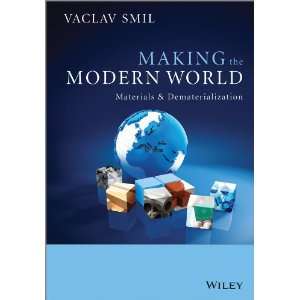Ronald Bailey Reviews Making the Modern World

From 1900 to 2000, the U.S. population quadrupled while the economy expanded 26-fold. As a result, U.S. per capita consumption of materials rose from 1.9 tons in 1900 to 5.6 tons in 1950 to 12 tons in 2000. In Making the Modern World, the University of Manitoba natural scientist Vaclav Smil cites data suggesting that global annual output now comprises about 10 billion different products. Nevertheless, the majority of people on the planet have not yet achieved the material abundance enjoyed by Americans, Europeans, and the Japanese. Can humanity find, transform, and deploy enough resources to lift those people into affluence? Reason Science Correspondent Ronald Bailey delves into Smil's primer on modern material flows seeking the answer.




Hide Comments (0)
Editor's Note: As of February 29, 2024, commenting privileges on reason.com posts are limited to Reason Plus subscribers. Past commenters are grandfathered in for a temporary period. Subscribe here to preserve your ability to comment. Your Reason Plus subscription also gives you an ad-free version of reason.com, along with full access to the digital edition and archives of Reason magazine. We request that comments be civil and on-topic. We do not moderate or assume any responsibility for comments, which are owned by the readers who post them. Comments do not represent the views of reason.com or Reason Foundation. We reserve the right to delete any comment and ban commenters for any reason at any time. Comments may only be edited within 5 minutes of posting. Report abuses.
Please to post comments
Mute this user?
Ban this user?
Un-ban this user?
Nuke this user?
Un-nuke this user?
Flag this comment?
Un-flag this comment?